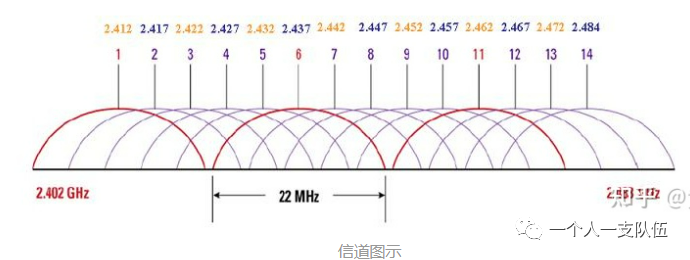
- English
- Español
- Português
- русский
- Français
- 日本語
- Deutsch
- tiếng Việt
- Italiano
- Nederlands
- ภาษาไทย
- Polski
- 한국어
- Svenska
- magyar
- Malay
- বাংলা ভাষার
- Dansk
- Suomi
- हिन्दी
- Pilipino
- Türkçe
- Gaeilge
- العربية
- Indonesia
- Norsk
- تمل
- český
- ελληνικά
- український
- Javanese
- فارسی
- தமிழ்
- తెలుగు
- नेपाली
- Burmese
- български
- ລາວ
- Latine
- Қазақша
- Euskal
- Azərbaycan
- Slovenský jazyk
- Македонски
- Lietuvos
- Eesti Keel
- Română
- Slovenski
- मराठी
- Srpski језик
Understanding of frequency band, channel, channel bandwidth, transmission rate
2023-08-09
Wireless communication refers to the mode of communication in which electromagnetic waves transmit information through space, also known as radio communication. No matter what kind of wireless access technology is used, there are four important parameters involved:
I. Frequency band
Wireless communication uses electromagnetic waves, since it is a wave, it has a frequency, by dividing the frequency of electromagnetic waves into different "segments", that is, frequency bands.
Define the frequency band
Frequency band: refers to a continuous electromagnetic wave frequency range

You can colloquially think of the frequency band as a highway between two places.
Case:
Wireless routers usually have two bands: 2.4GHz and 5GHz. That is, two different roads, just like the car on the highway and the subway on the underground track, each has its own merits.
Wavelength = wave speed * period = wave speed/frequency, so the higher the frequency, the shorter the wavelength.
Why is 2.4GHz strong through the wall and 5GHz fast transmission?
It is precisely because of the lower frequency of 2.4GHz that the wavelength is longer and it is easier to continue to travel around obstacles.
The 2.4G frequency band used by most appliances, wireless and other devices has a more crowded wireless environment and greater interference, while the 5GHz bandwidth is wider and less equipment, resulting in less interference.
II. Channel
Above we know the division of the frequency band, the channel is a further division on the basis of the frequency band.
Why does it need to be redivided?
In order to avoid competition between many devices, the Wi-Fi frequency band is divided into 14 channels

III. Channel bandwidth
The difference between the maximum frequency and the minimum frequency in a channel is called the channel bandwidth, and this value reflects the size of the frequency range covered by the channel.
In Wi-Fi, the bandwidth of each channel is 22MHz. However, in actual use, the effective bandwidth is 20MHz, of which 2MHz is the isolation band, which plays a protective role.

